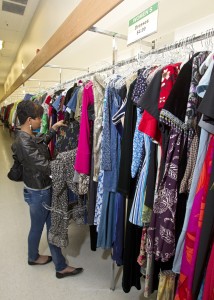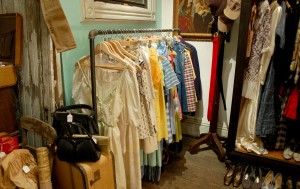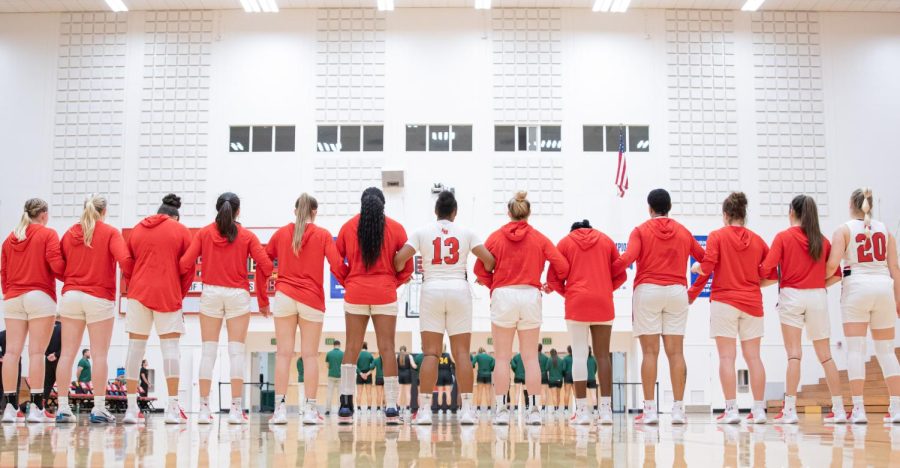
alternative.
The Buffalo Exchange store on Haight Street in San Francisco was busy when Kat Jacinto entered with a bag full of clothing.
Half an hour later, the 21-year-old woman came out with her bag empty and $20 more in her wallet.
“I’m kind of addicted to selling my clothing,” she said.
According to Jacinto, selling her clothes to the trading store gets rid of her clothes easily and is an easy way to make money.The Haight-Ashbury District in San Francisco is known for the numerous trading vintage clothing stores which line the streets.
Trading stores allow people to exchange their slightly used clothes, often vintage, for money and to purchase used clothes for a much lower price than a brand new item. As of recently, these stores have grown in popularity.
According to Rachel Redondo, manager of the Buffalo Exchange, this year was the most successful for the store since its opening in the mid-1980s.
Redondo is convinced this phenomenon has something to do with the economic recession.
For Angel Medel, assistant manager for Crossroads Trading Co., the recession has brought an increase in business to his Haight Street trading store in the past few months.
Medel said a lot of people affected by the recession choose to trade their clothing rather than pay high prices to purchase new ones.
The procedure for trading clothes is simple: when individuals desire to sell back their used clothing, a salesperson evaluates it according to style, condition, original retail value and desirability.
The customer is entitled to receive 50 percent credit of the retail value or 35 percent of that value in cash, Redondo said.
According Redondo, her store is “a mixture of used and new” clothing items. About 80 percent of their clothing comes from the public while the other 20 percent is new clothes they get from their vendors.

The bad economy isn’t the only reason why the trading stores are receiving more business these days. Medel said trends have greatly influenced buyers’ needs to shop for vintage clothing.
“It has become more trendy to go green, to recycle,” Redondo said. But above all, people buy vintage clothes for the look, confirmed Medel.
Jacinto admits she tries to buy most of her clothes in secondhand stores as well as donate her used items.
“I’m really into recycling clothes,” she said. She also buys vintage clothes because they are trendy. For her, “used clothes look more casual.”
The most desirable vintage fashion for the time being are flannels and Americana T-shirts from the 1970s, according to Redondo.
Vintage stores, similar to trading stores, have also become an alternative option to purchasing new clothing, but are typically more expensive than trading stores.
On the opposite side of the street from the Buffalo Exchange, Mystery Mister vintage clothing store sells fashion from past decades.
Rochelle Balar, co-owner of Mystery Mister, explained the difference in price tags between both shops is due to the uniqueness of the clothing found in vintage stores. The quality is a major factor in the high prices as well.
“Most [of the clothes] were made in USA with high quality fabric,” she said. The proof is they are still in good condition forty years later, she added.
The vintage stores in San Francisco give evidence to the vintage movement rooted in the city’s history, and display a sense of pride for the city’s famous hippie movement in the ‘60s and ‘70s while also preserving the hippie spirit, Redondo added.
Despite the quality of their products, real vintage stores don’t reach as many customers as trading stores do because of the prices. “It’s not as affluent as it was a few years ago,” affirmed Balar.







